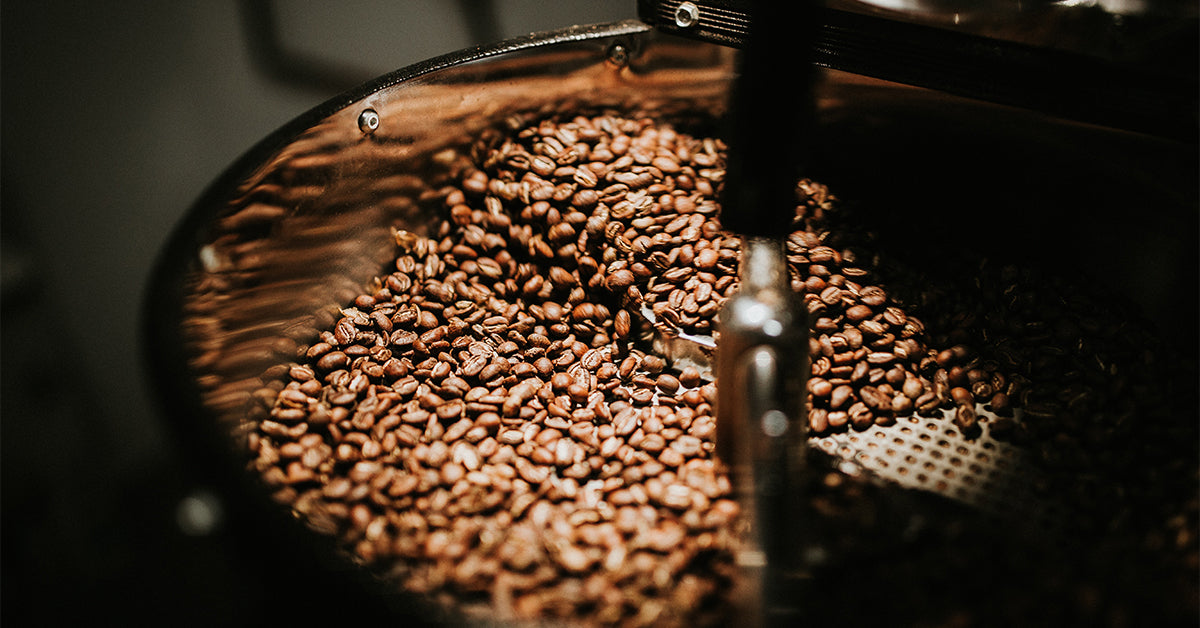20oz Beauty- Tumbler
Description
20oz Tumbler and Straw.
Hot or Cold
Coffee or Water
Hand Wash Only


Roasting is an essential process in making coffee beans - it affects the flavor, aroma, and color of the beans. Coffee roasts can be classified as light, medium, and dark. The darker the roast, the more intense and smoky flavors it offers.
Roasting can be done using a drum roaster or a fluid-bed roaster. Drum roasters typically take longer than fluid-bed roasters. However, they can produce a broader range of roast profiles because they control airflow and heat distribution more. Fluid-bed roasters are typically faster to use and can roast more varieties of beans.
Flavor profiles can be affected by the length of time the beans are in contact with air, so roasts with minimal oxygen exposure produce a sweeter, more floral-tasting bean. Roasting times vary depending on how dark you want your final product to be.
If you plan on using a French press or any method of making coffee that requires the ground coffee to be brewed directly with water, it is important to grind your beans coarsely. Coarsely ground beans will produce a more robust, bright-flavored cup of coffee. You can use a variety of methods to grind the beans coarsely. Some people like to use the bottom of a cast-iron skillet or a mortar and pestle. The method that works best for you is up to personal preference. Following are differences between coffee roasts through the roasting process and brewing properties.
The term 'light roast' refers to the color of roasted coffee beans before and after roasting. Generally, light roasts are classified as coffees with a lighter shade on the green spectrum.
That sounds simple, but on the production side, it's a matter of perfecting those small details. Lightly roasted beans are a lighter shade of brown and will typically be lighter than most coffee drinkers have seen before. It essentially goes down to how mass-market coffee has been traditionally roasted in the past. Light roast coffee beans finish roasting before they crack, typically at around 177 - 204°C.
The first crack in your coffee roast is the point at which this happens. The beans expand and release CO2 and water vapor. It results in a rich flavor profile with sugars from browning processes.
Medium roasted coffee beans are perfect for a moderate flavor without sacrificing acidity. Medium roast beans reach temperatures of 204 - 221°C during the process, which means they have a longer roasting time than light roast beans. Longer roasts can make the beans less acidic but more flavorful. It yields a body and sweetness perfect for this roast-level with a more condensed flavor.
Finally, we meet the dark-roasted coffees. Historically, coffees in markets have been this deep-roasted, and there is still a large market worldwide. It'll be dark in color and likely be the most recognized by most consumers as it has been the most popular roast degree. Dark-roasting can be used to cover up poor-quality beans; this type of roasting often masks the inherent flavor profile.
This explains why they are popular in the commercial market. Dark roast coffees usually reach the second crack. They are roasted longer than others at high temperatures, and that's why they are darker. It's usually done at 221 - 232°C after the beans have been weighed. The roaster's flame is progressively reduced until the desired browning level is achieved. It implies that the roasted beans are drier and less dense with a smoky, bitter taste.
Coffee is a popular drink that has been around for centuries and will continue to be famous for many more. It is the second most consumed beverage in the world. But how do coffee roasts differ? The coffee beans are roasted to produce different flavors and tastes. A lighter roast will have a more acidic taste, while a darker roast will have a sweeter taste.
Other factors affecting the flavor are how long the beans were roasted, the type of beans, and if blended with other types of beans. There are many different types of coffee roasts, and the darker the roast, the more intense and smoky the flavor. For instance, there is decaffeinated coffee, dark roast coffee, or light roasts.
Elina Brooks
I appreciate you letting us know that fluid-bed roasters are typically faster to use compared to drum roasters, which usually take a much longer time, while also being able to roast more varieties of beans. I love coffee, and I can’t go on with my day without a cup or two, so I was thinking of getting a roaster to use at home from now on. I’ll keep this in mind while I look for a fluid-bed coffee roaster to purchase for my home-use soon. https://coffeecrafters.com/product/valenta-7-fluid-bed-roaster/